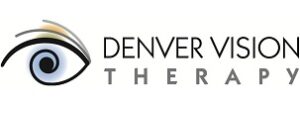VT Research and Media Library
Vision Therapy Research
Hundreds of peer-reviewed articles support the use of vision therapy to remediate many visual conditions.
Convergence Insufficiency Treatment Trial (CITT) is a randomized controlled study to examine treatment options for convergence insufficiency, a common eye teaming problem. They found that the most effective form of therapy is in-office vision therapy in conjunction with home activities. Read the article abstract here
A review of the literature by Cooper (Summary of Research on the Efficacy of Vision Therapy for Specific Visual Dysfunctions) found that vision therapy has the highest success rate for remediation of vision problems. Vision therapy relieves headaches and eyestrain caused by vision problems, and improves reading ability. Vision therapy has a higher success rate than strabismus surgery in treating some types of eye turns.
Stereo Sue proves that vision therapy is for adults too! A neurobiologist named Sue Barry is an international sensation since she published a book Stereo Sue about her experience regaining stereo vision after 48 years without it. She writes about the science behind vision therapy in a way that is easy and fun to read!
The College of Optometrists in Vision Development (COVD) has excellent resources for parents and patients regarding vision therapy research.
Vision Therapy has been around for hundreds of years. Ophthalmologists used to be trained in the art of what was then called ‘orthoptics’, but as they become more specialized to perform surgery, they no longer study orthoptics. Optometry is the only profession that is instructed in the techniques and science of vision therapy.
Color Light Therapy Research
Syntonic Phototherapy
https://www.researchgate.net/publication/45638974_Syntonic_Phototherapy
Foundations of color light therapy that history, devices, testing, colors, and effects. Pupils and visual fields are used to monitor progress and outcome of color light therapy by normalizing constricted fields and reducing pupil fatigue. Also states that children with learning problems have a functional reduction in their visual fields and can benefit from color light therapy.
Changes in the Brain Activity and Visual Performance of Patients with Strabismus and Amblyopia after a Compete Cycle of Light Therapy
https://www.mdpi.com/2076-3425/11/5/657/htm#B25-brainsci-11-00657
Foundations of color light therapy that history, devices, testing, colors, and effects. Pupils and visual fields are used to monitor progress and outcome of color light therapy by normalizing constricted fields and reducing pupil fatigue. Also states that children with learning problems have a functional reduction in their visual fields and can benefit from color light therapy.
The Theory and Practice of Syntonic Phototherapy: A Review
http://drboulet.com/wp-content/uploads/2014/11/syntonics-intro.pdf
Scientific models of how light affects the physiology and examples of other professionals use phototherapy.
Color Perception in the Immediate Periphery of the Visual Field
https://jov.arvojournals.org/article.aspx?articleid=2193447
Color perception sensitivity decreases with peripheral vision, but sensitivity ranges from 50 degrees wide. Red-green sensitivity declines more steeply towards the periphery than blue-yellow.
Effect of Transcranial Low-Level Light Therapy vs Sham Therapy Among Patients With Moderate Traumatic Brain Injury
https://www.ncbi.nlm.nih.gov/pmc/articles/PMC7490644/
Light therapy provides potential benefits for patients with moderate traumatic brain injury.
(Reduction in scores from a post concussion questionnaire).
Effects of BluTech Lenses on Melatonin, Sleep, Mood, and Neurobehavioral Performance
https://www.aaopt.org/detail/knowledge-base-article/effects-of-blutech-lenses-on-melatonin-sleep-mood-and-neurobehavioral-performance
Blue light blocking lenses help regulate melatonin, and may lessen the effects of harmful effects of light exposure at night and improve sleep.
Can red light recharge the retina?
https://www.aoa.org/news/clinical-eye-care/health-and-wellness/recharging-the-retina?sso=y
Red light exposure improves photoreceptor function after exposure.
Improvement in Depression Scores After 1 Hour of Light Therapy Treatment in Patients With Seasonal Affective Disorder
https://www.ncbi.nlm.nih.gov/pmc/articles/PMC5336550/
1 hour of bright light therapy has rapid improvement in of season affective disorder symptoms after a single session.
Short exposure to light treatment improves depression scores in patients with seasonal affective disorder: A brief report
https://www.ncbi.nlm.nih.gov/pmc/articles/PMC2913518/
Bright light therapy exhibits the biggest change in depression scores after 20 minutes and maximum change after 40 minutes.
Bright light therapy for depression: A review of its effects on chronobiology and the autonomic nervous system
https://www.ncbi.nlm.nih.gov/pmc/articles/PMC5403163/
How bright light therapy affects the body.
Daily morning light therapy is associated with an increase in choroidal thickness in healthy young adults
https://www.ncbi.nlm.nih.gov/pmc/articles/PMC5974399/#CR28
Light can influence changes in development of the eye.
Potential for the development of light therapies in mild traumatic brain injury
https://www.ncbi.nlm.nih.gov/pmc/articles/PMC6199671/
Blue light can improve TBI symptoms by improving sleep, cognition, alertness, depression, headaches, and pain.
Illuminating Rationale and Uses for Light Therapy
https://www.ncbi.nlm.nih.gov/pmc/articles/PMC2670336/
Light therapy can be used to improve sleep, dementia, and other mood disorders.
Evaluation of green light exposure on headache frequency and quality of life in migraine patients: A preliminary one-way cross-over clinical trial
https://pubmed.ncbi.nlm.nih.gov/32903062/
Green light can be used in reducing the frequency of headaches and migraines.
Green Light Exposure Improves Pain and Quality of Life in Fibromyalgia Patients: A Preliminary One-Way Crossover Clinical Trial
https://pubmed.ncbi.nlm.nih.gov/33155057/
Green light can be used in reducing pain in fibromyalgia patients.
Blue-light treatment reduces spontaneous and evoked pain in a human experimental pain model
https://pubmed.ncbi.nlm.nih.gov/34901678/
Blue light has shown it can help to reduce spontaneous pain in patients.
